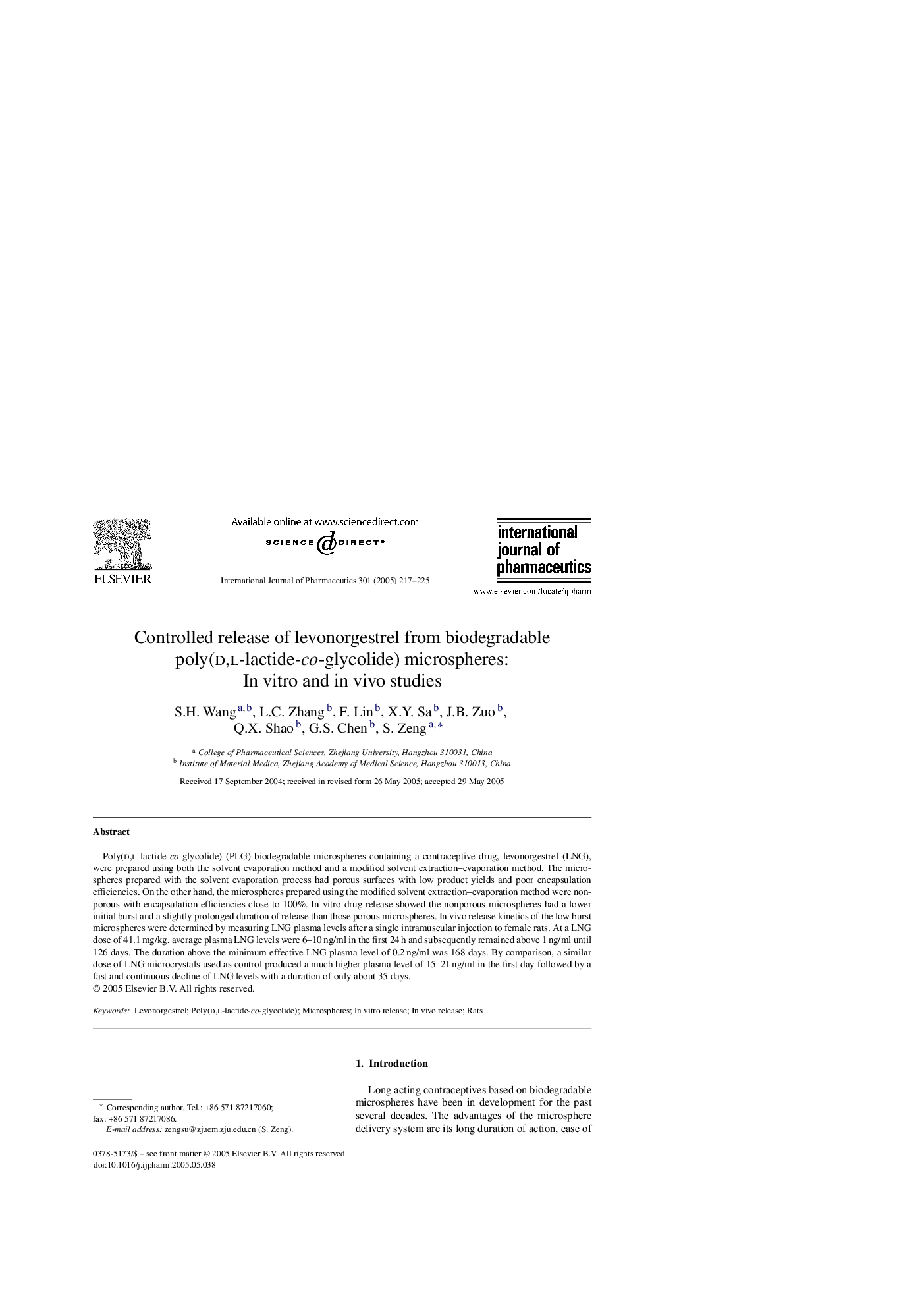| Article ID | Journal | Published Year | Pages | File Type |
|---|---|---|---|---|
| 9918660 | International Journal of Pharmaceutics | 2005 | 9 Pages |
Abstract
Poly(d,l-lactide-co-glycolide) (PLG) biodegradable microspheres containing a contraceptive drug, levonorgestrel (LNG), were prepared using both the solvent evaporation method and a modified solvent extraction-evaporation method. The microspheres prepared with the solvent evaporation process had porous surfaces with low product yields and poor encapsulation efficiencies. On the other hand, the microspheres prepared using the modified solvent extraction-evaporation method were nonporous with encapsulation efficiencies close to 100%. In vitro drug release showed the nonporous microspheres had a lower initial burst and a slightly prolonged duration of release than those porous microspheres. In vivo release kinetics of the low burst microspheres were determined by measuring LNG plasma levels after a single intramuscular injection to female rats. At a LNG dose of 41.1Â mg/kg, average plasma LNG levels were 6-10Â ng/ml in the first 24Â h and subsequently remained above 1Â ng/ml until 126 days. The duration above the minimum effective LNG plasma level of 0.2Â ng/ml was 168 days. By comparison, a similar dose of LNG microcrystals used as control produced a much higher plasma level of 15-21Â ng/ml in the first day followed by a fast and continuous decline of LNG levels with a duration of only about 35 days.
Keywords
Related Topics
Health Sciences
Pharmacology, Toxicology and Pharmaceutical Science
Pharmaceutical Science
Authors
S.H. Wang, L.C. Zhang, F. Lin, X.Y. Sa, J.B. Zuo, Q.X. Shao, G.S. Chen, S. Zeng,
